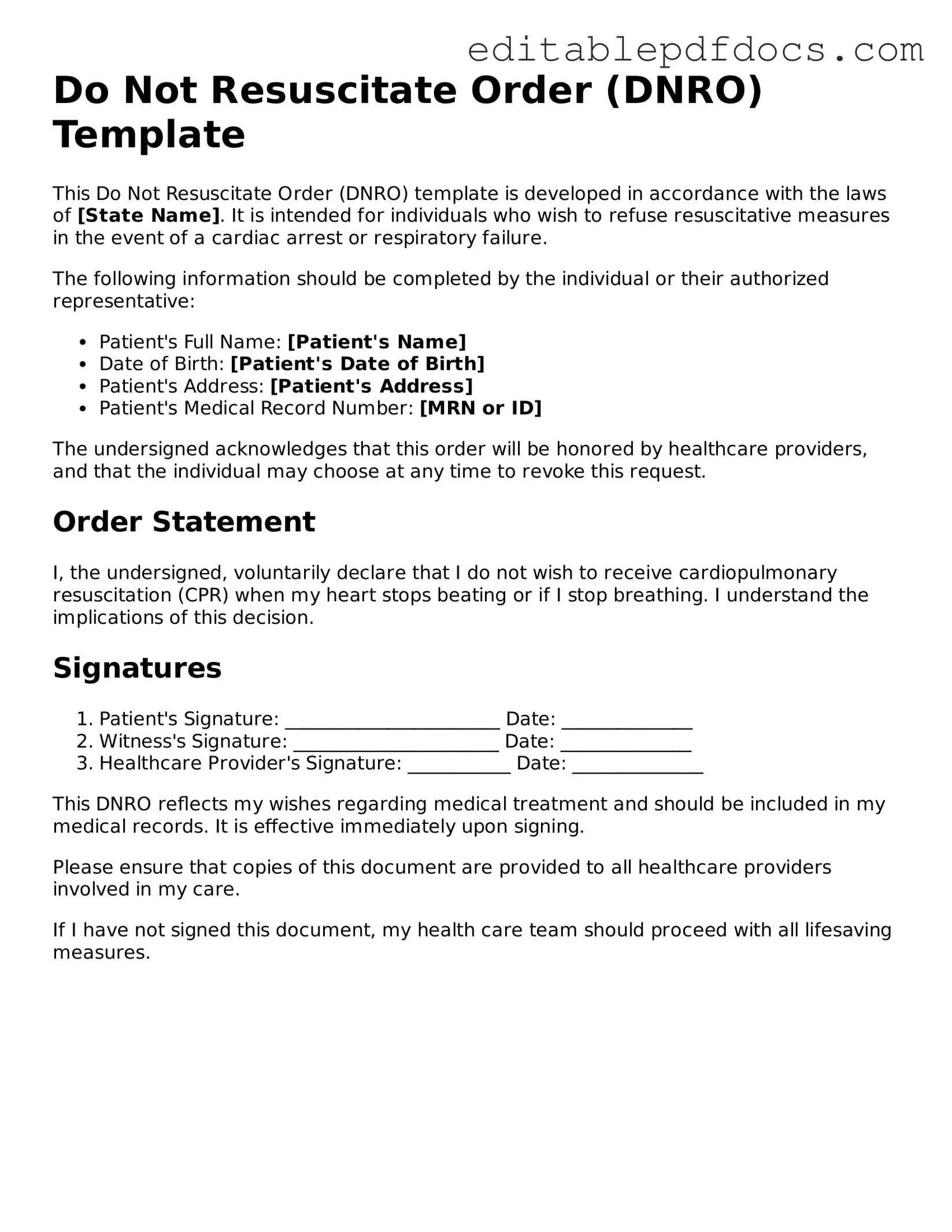Filling out a Do Not Resuscitate (DNR) Order form is an important step for individuals who wish to express their medical preferences. However, many people make mistakes during this process that can lead to confusion or even unwanted medical interventions. Awareness of these common errors can help ensure that your wishes are respected.
One frequent mistake is failing to discuss the decision with family members. Open conversations about end-of-life preferences can prevent misunderstandings and ensure that everyone is on the same page. Without this dialogue, loved ones may struggle to honor your wishes during a critical time.
Another common error is neglecting to sign and date the form. A DNR Order is only valid if it is properly completed. An unsigned or undated document may not be recognized by medical personnel, potentially leading to resuscitation efforts that you did not want.
Some individuals mistakenly assume that a verbal agreement is sufficient. While conversations about your wishes are valuable, a written and signed DNR Order is essential. Medical staff rely on documented orders to guide their actions, so having the form completed correctly is crucial.
Additionally, people often overlook the importance of specifying the scope of the DNR Order. It is vital to clearly state whether the order applies to all resuscitation efforts or only specific interventions. Lack of clarity can result in medical teams making decisions that do not align with your true preferences.
Another error involves not keeping copies of the DNR Order accessible. It is important to provide copies to your healthcare provider, family members, and any facilities where you receive care. If the document cannot be readily found, it may not be honored when needed.
Sometimes, individuals forget to review and update their DNR Orders regularly. Life circumstances and health conditions can change, and it is essential to ensure that your wishes reflect your current preferences. Regularly revisiting the form can help you stay aligned with your intentions.
People may also make the mistake of using outdated forms. Medical guidelines can change, and using an old version of the DNR Order may lead to complications. Always check that you are using the most current form to ensure compliance with legal and medical standards.
Another mistake is not considering the impact of a DNR Order on other medical treatments. A DNR does not mean that you will receive no medical care; it only pertains to resuscitation efforts. Understanding this distinction is important for making informed decisions about your overall healthcare.
Finally, individuals sometimes fail to communicate their DNR wishes to their healthcare providers. It is crucial that your medical team is aware of your preferences. A DNR Order should be part of your medical record to ensure that all healthcare professionals involved in your care are informed.
By being mindful of these common mistakes, you can help ensure that your DNR Order accurately reflects your wishes and is honored when it matters most. Taking the time to carefully fill out the form and communicate your decisions can provide peace of mind for both you and your loved ones.
